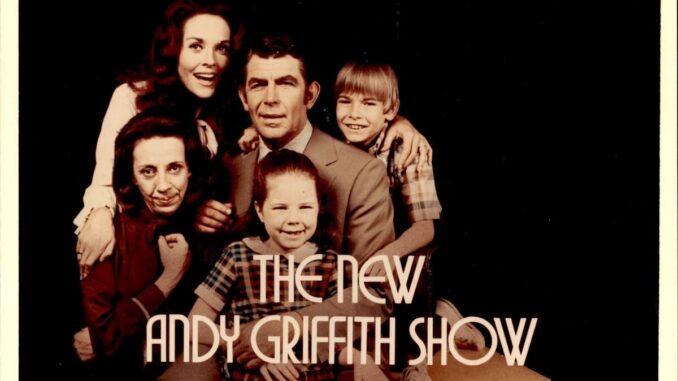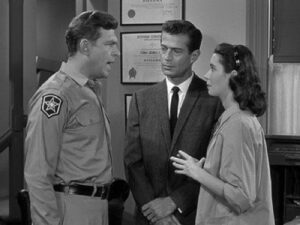
Television in the 1960s was filled with a lot of high concepts, but nothing was quite like The Andy Griffith Show. During this time, there was the wacky adventures of seven stranded castaways (Gilligan’s Island), an alien among us (My Favorite Martian), monsters living down the block (The Munsters, The Addams Family), witches in suburbia (Bewitched) and magical genies in Florida (I Dream of Jeannie). Yet standing out above them all — and decidedly low concept — was an homage to the good old days, and the innocence of small-town life. And that came in the form of The Andy Griffith Show.
Running for eight years from 1960-68 (and then pretty much continuing for another three with a different lead character in the spin-off Mayberry, RFD), the show introduced us to the world of Sheriff, and widower, Andy Taylor (Andy Griffith); his son Opie (Ron Howard), their caretaker Aunt Bee (Frances Bavier), Deputy Sheriff Barney Fife (Don Knotts), and a wide variety of townspeople who became fully formed characters of their own, including Jim Nabors’ Gomer Pyle (eventually spun off into his own successful series).

It’s difficult to describe the appeal of the show, but the bottom line is that you can still watch episodes today and take away so much in the sense of warmth and good-natured humor. The Andy Griffith Show won’t change the world, but somehow it reminds us that it’s not such a bad place.The series was born in an episode of The Danny Thomas Show.
Entertainer Danny Thomas had a major success with his own sitcom from 1953 to 1964. In the episode “Danny Meets Andy Griffith,” Danny is speeding in Mayberry and gets pulled over, where he gets a taste of country justice (and a bit of comeuppance for his arrogance). The episode nicely set up what would eventually become The Andy Griffith Show.
Andy himself had been doing well on the big screen and the stage, and he had become curious about television. While performing in the play Destry Rides Again, he was approached by legendary TV producer Sheldon Leonard with the idea of what would become his own series. He didn’t like the concept, but he did like Sheldon, so he said yes. Not hurting his decision-making is the fact that, ultimately, he would end up owning more than half the show.
